Manitoba Insect & Disease Update
Issue 1: May 18, 2016
Summary
Insects: A few enquiries have been coming in regarding insects found in the soil. Some are insects that could potentially feed on crops, such as cutworms and wireworms, while others are insects that would not damage crops, such as crane fly larvae and Therevid larvae. Flea beetles are active, and their feeding can be seen on volunteer canola.
Plant Pathogens: Plant diseases have not yet been of concern, however scouting is encouraged in crops that are established.
Early-season Soil Inhabiting Insects
There is a lot of invertebrate life in the soil, and in most instances more of it will be beneficial than harmful to your crops. So it is good to know those beneficial organisms from those that can potentially feed on and harm the crop. Below are a few of the insects that have been noted in fields so far this year. Quiz yourself and see how many you can identify from the photos.
Soil Insects Quiz:
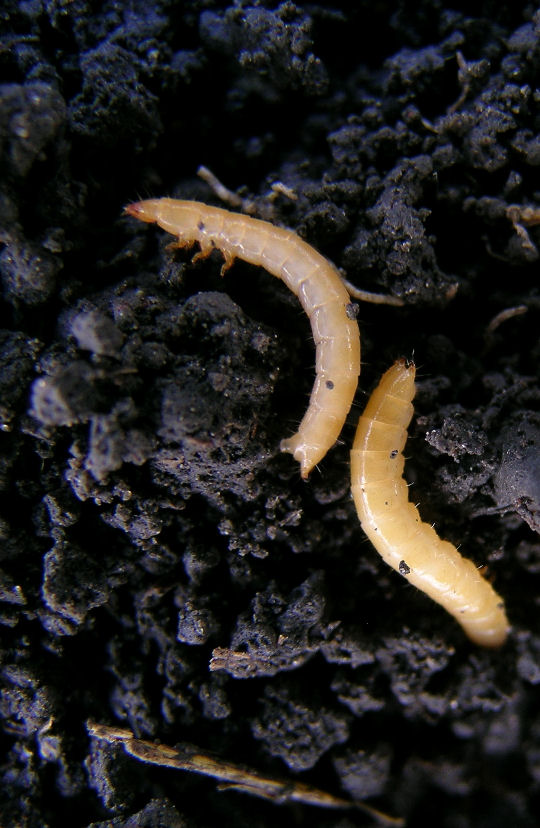
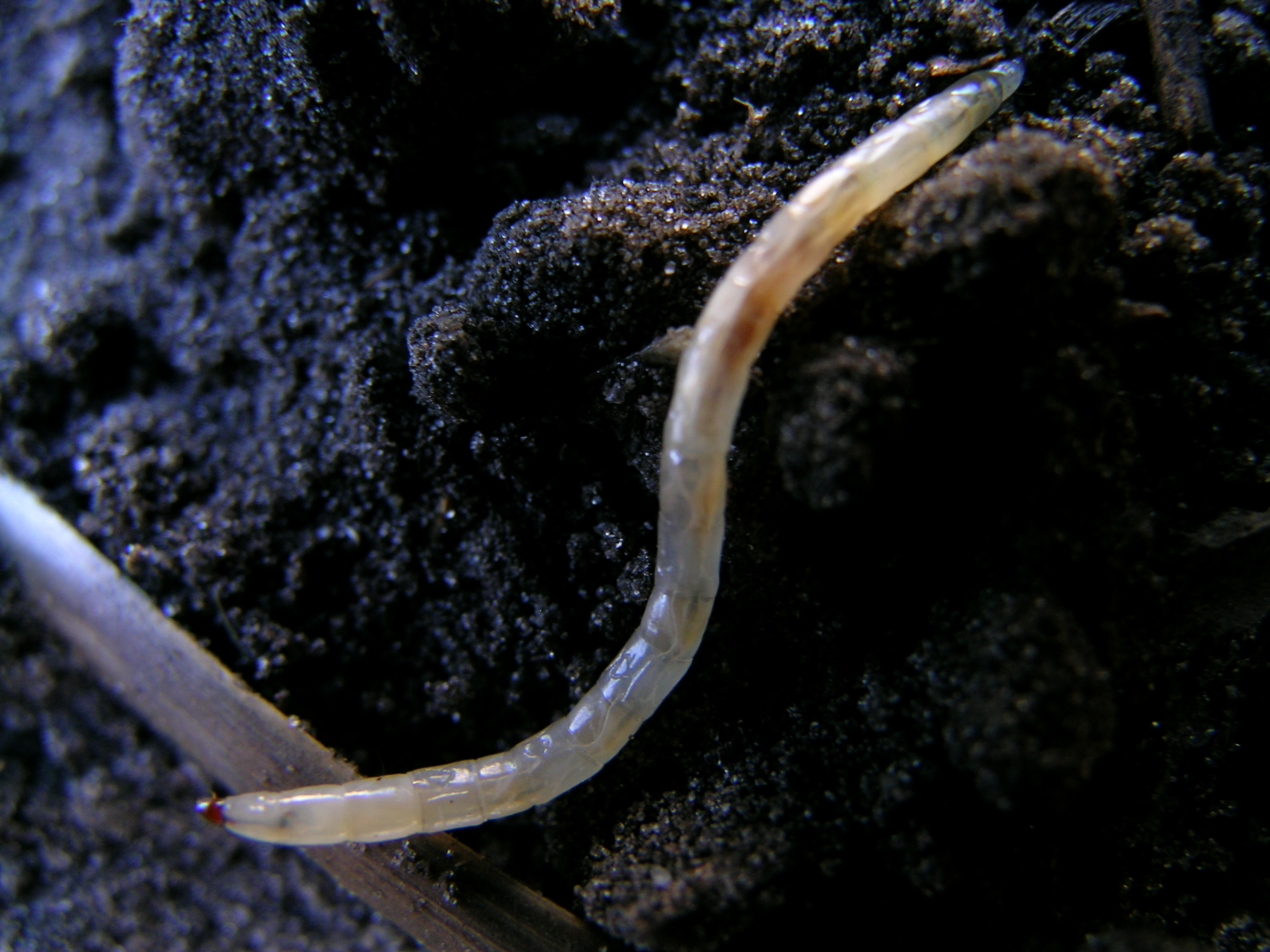
a) Hints: Note the legs at the front b) Hints: No legs, head capsule visible
Note the notch at the end of the body Wiggles rapidly when disturbed
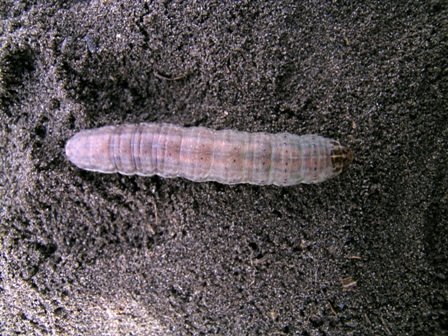
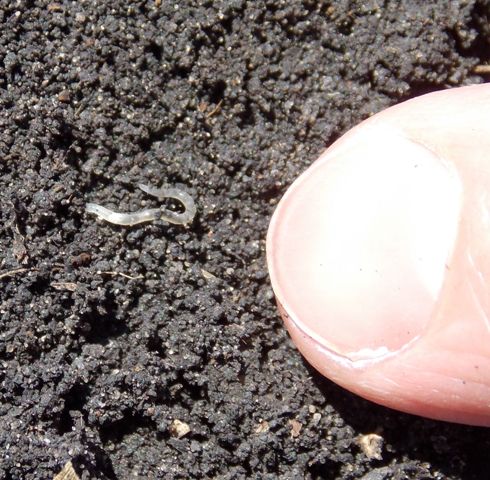
c) Hints: Has true legs at the front, and small fleshy legs on abdomen d) Nearly transparent body
Curls up when disturbed No legs, no head capsule visible.
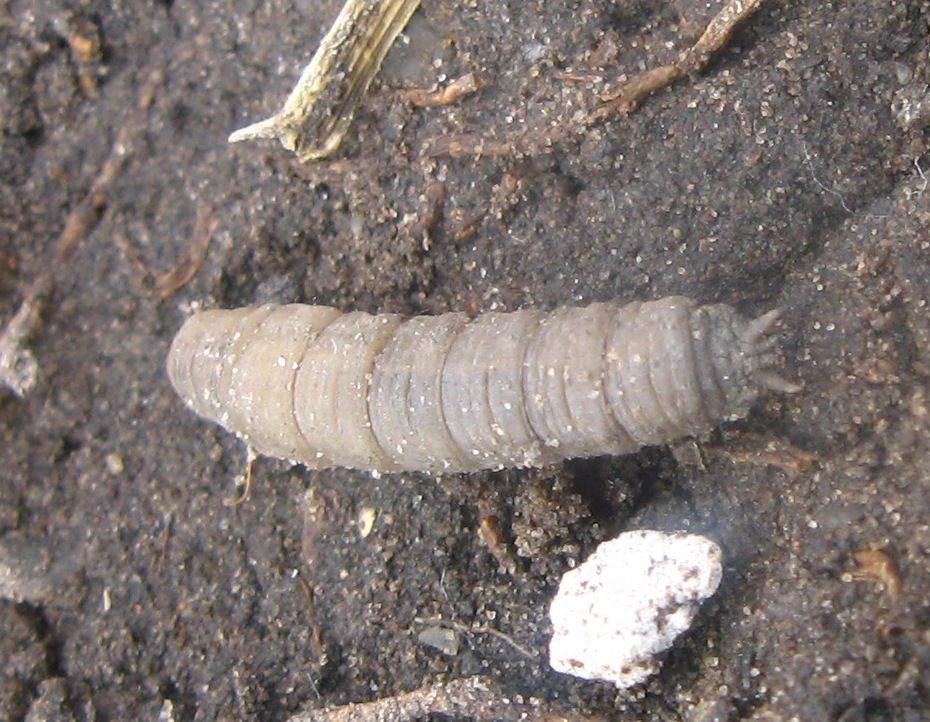
e) Hints: No legs

e) Hints: No legs
Have extensions or fingerlike lobes at the end of the body.
Answers:
Answers:
a) This is a wireworm. Wireworms do have true legs at the front, although they are small, so you may have to look hard. We do have different species, which can vary in size and appearance somewhat. At high enough levels they can be potential crop pests.
b) This is Therevid larva, the adults of which are known as stiletto flies. These are very quick and will wiggle quite rapidly if you disturb them. They are predators, and one of their known prey items is wireworms. So these are beneficial insects and not potential crop pests.
C) This is a cutworm, specifically a redbacked cutworm. If you look on the underside, they will have 3 pairs of true legs near the front of the body, and 5 pairs of fleshy legs on the abdomen. So based on this you know that it is a moth larva as only Lepidoptera (butterfly and moth) larvae and sawflies have prolegs, and with sawflies it is always 6 or more pairs of prolegs, Cutworms prefer to be hidden during the day, and when you disturb them they will curl up. Cutworms are potential crop pests.
d) This is a type of worm called an enchytraeid worm. They are usually quite small, almost transparent worms, and being worms have no legs. You may find more of them in fields that have a lot of decaying plant material. These are not crop pests.
e) This is the larva of a crane fly. Crane fly larvae you find in the field in Manitoba are likely feeding on decaying plant material, although in other parts of Canada there are species considered plant pests. Larvae can be beneficial for the soil by processing organic matter and increasing microbial activity. For species found in Manitoba these are not considered crop pests. Adult crane flies look like giant mosquitoes but do not bite.
Early-Season Pathogens to Scout For
Seeding is progressing rapidly in Manitoba. Fall cereal crops have overwintered nicely and no disease issues have been reported yet. Following are a few things to be vigilant about and to include in an early scouting list.
Rust Diseases:
Stripe rust has been identified in many states in the United States including South Dakota and Minnesota and in some areas in southern Alberta. There have been no sightings of Stripe rust in Manitoba as of today. However, rust diseases can develop and spread quickly with the return of optimum temperature and prolonged period of humidity. This would mean that Manitoba growers will have to be vigilant and timely scouting will be essential.
Stripe rust has been identified in many states in the United States including South Dakota and Minnesota and in some areas in southern Alberta. There have been no sightings of Stripe rust in Manitoba as of today. However, rust diseases can develop and spread quickly with the return of optimum temperature and prolonged period of humidity. This would mean that Manitoba growers will have to be vigilant and timely scouting will be essential.
Leaf rust and stem rust were also detected in many areas in the southern United States. For more information on rust diseases check the USDA Cereal Rust Bulletin.
Wheat Streak Mosaic Virus:
Wheat Streak Mosaic Virus (WSMV) was confirmed in North Dakota and Montana. WSMV was found in four counties in North Dakota in both spring and winter wheat. In Montana, WSMV was widespread in the northern region and also detected in pockets in the eastern region. In Manitoba, no report of WSMV has been received yet but WSMV has occurred in Manitoba in the past. Early scouting for WSMV will be necessary as WSMV has the potential to reduce the yield by over 50% in severe cases.
What is WSMV?
WSMV is a viral disease transmitted by wheat curl mites. There are no chemical control agents registered for the virus and the mites. Fungicides DO NOT work against this disease.
WSMV is a viral disease transmitted by wheat curl mites. There are no chemical control agents registered for the virus and the mites. Fungicides DO NOT work against this disease.
How to scout?
WSMV often starts at the edge of the field and plants show yellowing and stunting symptoms. When scouting for WSMV, look for discontinuous yellow streaks parallel to veins on the individual leaves. Spring wheat fields are at greater risk when planted adjacent to the winter wheat fields with known history of WSMV.
WSMV often starts at the edge of the field and plants show yellowing and stunting symptoms. When scouting for WSMV, look for discontinuous yellow streaks parallel to veins on the individual leaves. Spring wheat fields are at greater risk when planted adjacent to the winter wheat fields with known history of WSMV.
Insect Monitoring Programs
Diamondback Moth: Diamondback moth monitoring with the pheromone baited traps is now underway. Some moths have been caught in the traps, but levels so far have been low. Many evenings over the past week would not have been conducive for flight of the moths, although we are expected to get into a period of warmer evening temperatures. Table 1 below summarizes the highest cumulative counts in Manitoba.
Table 1. Highest cumulative trap counts for diamondback moth adults over the trapping period May 1 to May 14, 2016.
| Location | Count |
|---|---|
| Rosebank | 20 |
| Ste. Elisabeth | 15 |
| Myrtle | 14 |
| Beausejour | 11 |
Compiled by:
John Gavloski, Entomologist Pratisara Bajracharya, Field Crop Pathologist
Manitoba Agriculture Manitoba Agriculture
Phone: (204) 745-5668 Phone: (204) 750-4248
To report observations on insects or plant pathogens that may be of interest or importance to farmers and agronomists in Manitoba, please send messages to the above contacts.
To be placed on an E-mail list so you will be notified immediately when new Manitoba Insect and Disease Updates are posted, please contact John Gavloski at the address or numbers listed above.
